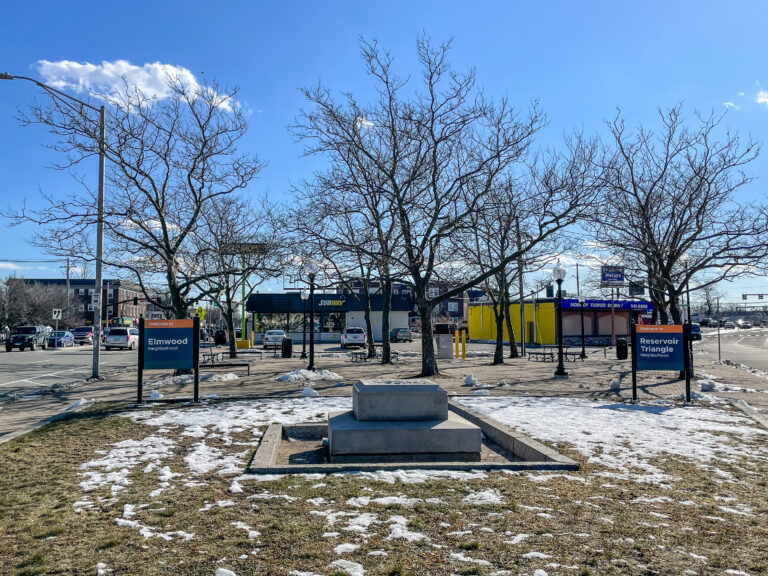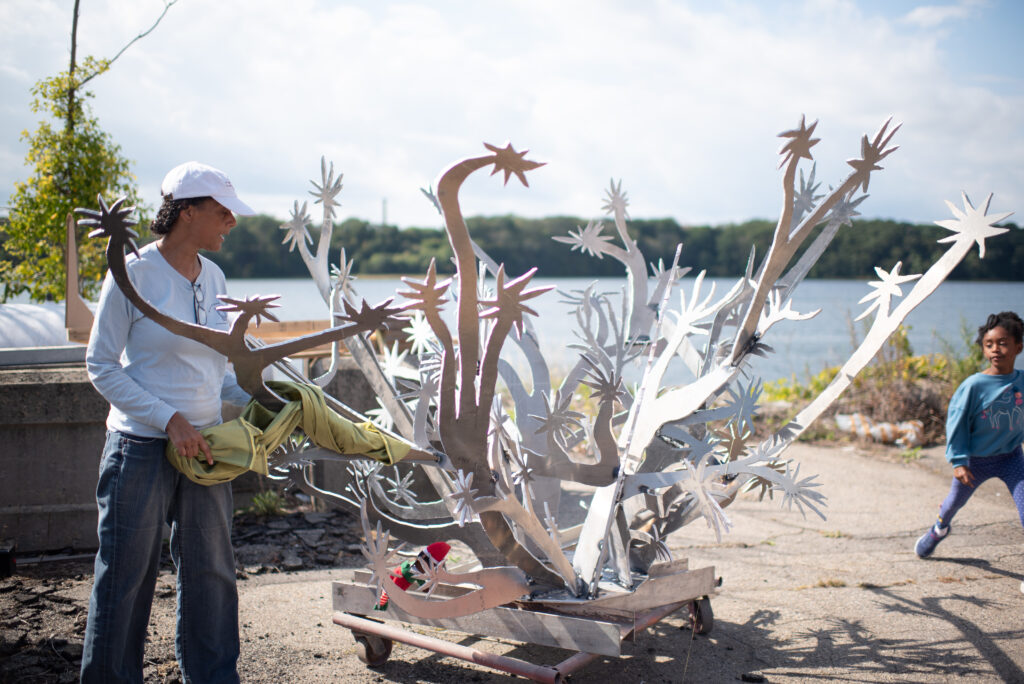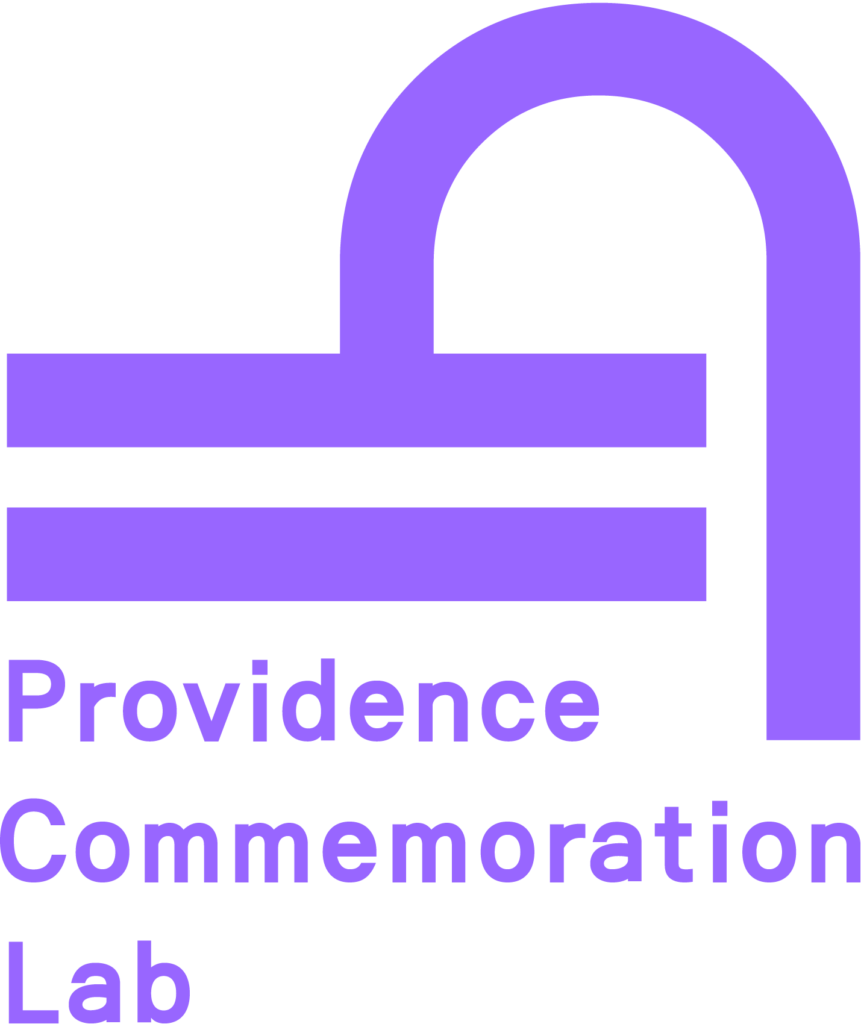In a conversation with PCL artist Valerie Tutson earlier this summer, we talked about her installation, ‘AncesTree’, at Former Columbus Square, and about collaboration, commemoration, and her storytelling experiences that led to her co-founding the Rhode Island Black Storytellers (RIBS). Opening with a poem that she calls her daily prayer, written below is the full interview.

Let my living be a monument,
a breathing, moving testimony
to the battle that was fought and won
so that I could walk through yesterday to this day.
Let my breath be music to the ancestors,
Let my words give honor to my mother and father
and their mothers and fathers and theirs and so on
To the first word– in the beginning was the Word.
Let my living be a monument
Let my hands touch all I meet,
in friendship, in love, in healing.
The heart is in the hand, I heard someone say once
–Let my living be a monument.
Let my steps be steady and sure,
following along the paths of goodness and truth
Let me move with light hearted grace,
dancing toward a glorious place,
skipping in and out and back and forth,
and up and down and over and around that line,
All that is, once was and will forever be.
Let my steps gather strength from the old way
so that I can walk boldly to a new day.
Let my living be a monument.
Tell us about this beautifully fierce poem that you’ve just read.
One of the things I learned in the Czech Republic was that there are a lot of stories out there that most of us don’t know. There are a few dominant stories that make the news, and then there are the regular peoples’ stories that are often left out. I was really conscious of that when I started thinking about my work at the Commemoration Lab. One of the things that I wanted was for my work to be a living thing. So part of my research was to walk up and around the site and through the park to pay attention to the people in that place. One day a person selling phone plans at the Square came to me and asked- Wasn’t there a statue in this place? And I told that there was. When I asked him if he remembered what it was, he responded in negative. So, I told him that it was Christopher Columbus’s statue and he said that it was probably time for him to be gone. We just cracked up about it. Most of the people with whom I have had similar conversations have given the same response. They either didn’t remember it, or began to remember it. My home is one block away from the Square and I hadn’t ever really paid attention to it in the last 20 years. I remember I was driving home on the day that they were removing the statue and a whole bunch of people in the neighborhood had gathered to watch, so that’s what I really remember. The reason why people didn’t have a memory of the statue and there was such a disconnect. A number of other such instances led me to conceptualize a temporary installation here called, Ances-Tree.

How have your experiences shaped the work that you are doing with PCL?
One of the things I learned in the Czech Republic was that there are a lot of stories out there that most of us don’t know. There are a few dominant stories that make the news, and then there are the regular peoples’ stories that are often left out. I was really conscious of that when I started thinking about my work at the Commemoration Lab. One of the things that I wanted was for my work to be a living thing. So part of my research was to walk up and around the site and through the park to pay attention to the people in that place. One day a person selling phone plans at the Square came to me and asked- Wasn’t there a statue in this place? And I told that there was. When I asked him if he remembered what it was, he responded in negative. So, I told him that it was Christopher Columbus’s statue and he said that it was probably time for him to be gone. We just cracked up about it. Most of the people with whom I have had similar conversations have given the same response. They either didn’t remember it, or began to remember it. My home is one block away from the Square and I hadn’t ever really paid attention to it in the last 20 years. I remember I was driving home on the day that they were removing the statue and a whole bunch of people in the neighborhood had gathered to watch, so that’s what I really remember. The reason why people didn’t have a memory of the statue and there was such a disconnect. A number of other such instances led me to conceptualize a temporary installation here called, Ances-Tree.

How did you conceptualize your PCL installation, ‘Ances-Tree’?
In one of our first activations onsite, I came up with a series of questions to ask of my neighbours, and the girls from Sophia Academy in a collaborative event that Lu, Shey and I did. I asked them: What did they remember of the statue? What did they think about its removal? Some people responded by saying that it’s good that he’s gone and others were a bit sad about the removal just because of the history and the conversation that can be sparked because of his presence. “Who would you like to put on there (the pedestal)?” I asked. And they responded by saying– a native American woman, or some local native American chiefs or leaders, or Harriet Tubman, because people have this first idea that it has to be someone famous. And then I went on to ask, “Who would you like to honor in your life?” That’s where it got really interesting, because people always went to family, their mothers, fathers, aunties, grandparents, people who made the bold decision to come here to Rhode Island from someplace else, or teachers, community members, etc. Next, I asked them, if they were to be put on the statue, how would they want people to remember them? It was very interesting to watch people think about the way they want to live their lives- as kind, helpful, follower of dreams. And then I asked them, how did they want to put something up there that’s not a person but that embodies the qualities around the things that they want to remember. Some of the responses really stuck with me. A young girl from Sophia Academy told me that she would love to see a woven basket, because women all over the world make, carry, and use baskets– you can use them to collect things, carry them from one place to another, they’re useful, beautiful and they make me think of all of the women in my life. Another thing that several people talked about was that of a tree, how their roots go deep into the ground, and that they communicate underneath the ground. Some evoked the idea of the tree of life, with the roots and the branches– it’s the past, the present, and the future, all at one time. So that’s when I came to this desire to create an Ances-Tree that all of us can gather around, share stories under. I had the vision to create a standing frame of a tree on top of the monument base and then weave the fabric around and through it. The fabric would carry words or names of people from different cultures who come there to symbolize past, present and future, all at once.

How are collaborations shaping your work and process?
When I conceptualized my installation, I began to think about bringing it to life, because I am not a fabricator, or a visual artist– I’m a storyteller, a theatre performer. Fortunately, I know some amazing artists, like Jess Brown, who works at RISD and does amazing things with the community. She helped me sketch out my ideas and tease out the structure, and so we went up to the statue and took some measurements. Our initial idea was to have some leafiness or some fabric things on the top, which was in the original design, but we’ve been running into challenges. Firstly, it’s a really windy space, so we needed to create a base that was secure and wouldn’t fly away. I was introduced to Charlie, a fabricator, who has been helping me think about this and we’re down to envisioning spindly branches at the top which will allow us to weave the fabric through. Another challenge that we faced was that the base is historic granite, which means that we cannot drill into it, so my neighbor Jim Barnes, who is in the Architecture department at RISD suggested having a steel sleeve over the lip of the granite top to secure everything. So that’s where we are right now, working on some new designs to try and get it all passed and approved by the Parks Commission. It has been a process, but a good one, because as a storyteller I’m often on my own but to actually create Ances-Tree, I have welcomed a lot of help, and it has helped me grow as an artist.

Who would you like to honor and commemorate in your life?
My neighbor who lived down the street, Bobby Husband passed away earlier this year unexpectedly. When I had just started working on this project last year, I told Bobby about it and he told me in passing that at one point four black judges used to live in this neighborhood and deliberately chose it as their home in the 70s. So that’s still a really important part of the story that I’m teasing out, and it’s part of the reason I moved into this neighborhood and stayed in Providence. I grew up in a really white community in a rural town in Connecticut. So when I moved to Providence to go to Brown University, I was working at the Langston Hughes Center for the Arts at the Opportunities Industrialization Center (OIC) of RI building that also housed the Black Heritage Society. OIC was started by Michael Van Langston, and the building was made by Len Cabral and his brother, Allie, along with others from the black community. There was a very visible and active black upper/ middle class and professional people, powerful lawyers, who lived in the same neighbourhood as mine, near the PCL site. It is very important for me when I think about whom I want to commemorate because if you go around this neighborhood today, you wouldn’t know that this was a black neighborhood in Providence. And there are many stories about why people were displaced or why they moved away. But it’s a really important story that I want to make sure we also honor in this process.

Tell us about RIBS- Rhode Island Black Storytellers.
I co-founded RIBS almost 28 years ago, believe it or not. We started it because there was money from the Rhode Island Foundation back in the day to celebrate black artists in the community. They were doing a project called, ‘I’ll make me world’, and they were looking for things to celebrate for the whole year. There were many of us who were storytellers and worked all over the place, but we wanted to work at home, and so we started the Funda festival. I have just come back from South Africa, and ‘funda’ means to teach and to learn. With this we decided to start a Black Storytelling Festival, and this January ’26, will be our 28th year. The response we received was so great that we wanted to be consistent in having a space for black people to tell stories to all people in our community. That’s been our mission, to promote awareness, appreciation and application. This past year has been especially fun because we’ve been working with kids for a number of years doing the Funda story camp, so they get to learn stories and have fun. We started our Legacy Academy, which we call a culturally based storytelling training program and that felt really important, because everybody claims storytelling these days, and so much of it is personal narrative, but there’s power in the culturally based storytelling and really understanding that the folklore, the songs, the historical stories are the things that we carry in our bones. These are the things that make us unique, they make us a part of a cultural community and identity. And most of us have multiple identities now. My Scottish great grandmother once said, “When you know the stories and the songs of your people, you know who you are.” And at this time, when people feel so anxious, I think it’s because we don’t feel connected. It is one thing to connect with one another, but when you really connect with who you are, it’s kind of related to ancestry, too.
Learn more about Valerie here and follow the PCL Instagram to see more from our Studio Visit series!

